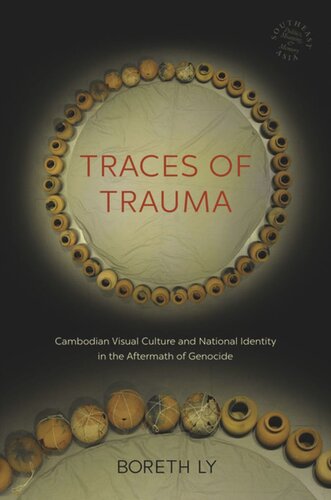

Most ebook files are in PDF format, so you can easily read them using various software such as Foxit Reader or directly on the Google Chrome browser.
Some ebook files are released by publishers in other formats such as .awz, .mobi, .epub, .fb2, etc. You may need to install specific software to read these formats on mobile/PC, such as Calibre.
Please read the tutorial at this link: https://ebookbell.com/faq
We offer FREE conversion to the popular formats you request; however, this may take some time. Therefore, right after payment, please email us, and we will try to provide the service as quickly as possible.
For some exceptional file formats or broken links (if any), please refrain from opening any disputes. Instead, email us first, and we will try to assist within a maximum of 6 hours.
EbookBell Team

0.0
0 reviewsHow do the people of a morally shattered culture and nation find ways to go on living? Cambodians confronted this challenge following the collective disasters of the American bombing, the civil war, and the Khmer Rouge genocide. The magnitude of violence and human loss, the execution of artists and intellectuals, the erasure of individual and institutional cultural memory all caused great damage to Cambodian arts, culture, and society. Author Boreth Ly explores the “traces” of this haunting past in order to understand how Cambodians at home and in the diasporas deal with trauma on such a vast scale.
Ly maintains that the production of visual culture by contemporary Cambodian artists and writers—photographers, filmmakers, court dancers, and poets—embodies traces of trauma, scars leaving an indelible mark on the body and the psyche. His book considers artists of different generations and family experiences: a Cambodian-American woman whose father sent her as a baby to the United States to be adopted; the Cambodian-French film-maker, Rithy Panh, himself a survivor of the Khmer Rouge, whose film The Missing Picture was nominated for an Oscar in 2014; a young Cambodian artist born in 1988—part of the “post-memory” generation. The works discussed include a variety of materials and remnants from the historical past: the broken pieces of a shattered clay pot, the scarred landscape of bomb craters, the traditional symbolism of the checkered scarf called krama, as well as the absence of a visual archive.
Boreth Ly’s poignant book explores obdurate traces that are fragmented and partial, like the acts of remembering and forgetting. His interdisciplinary approach, combining art history, visual studies, psychoanalysis, cultural studies, religion, and philosophy, is particularly attuned to the diverse body of material discussed in his book, which includes photographs, video installations, performance art, poetry, and mixed media. By analyzing these works through the lens of trauma, he shows how expressions of a national trauma can contribute to healing and the reclamation of national identity.